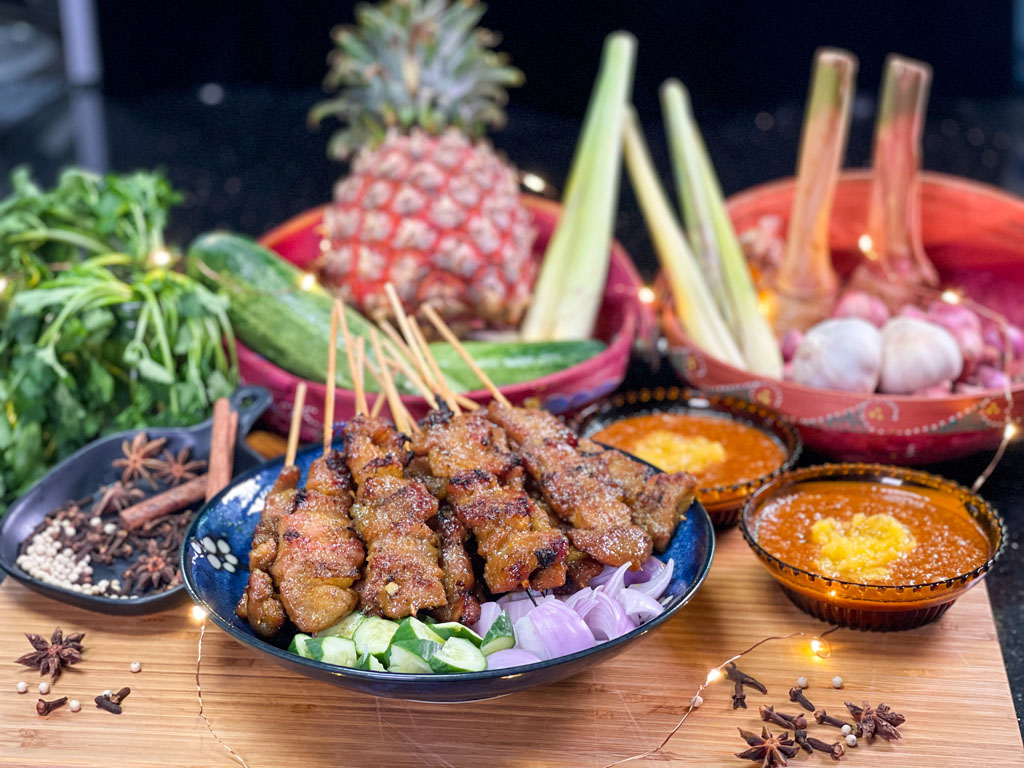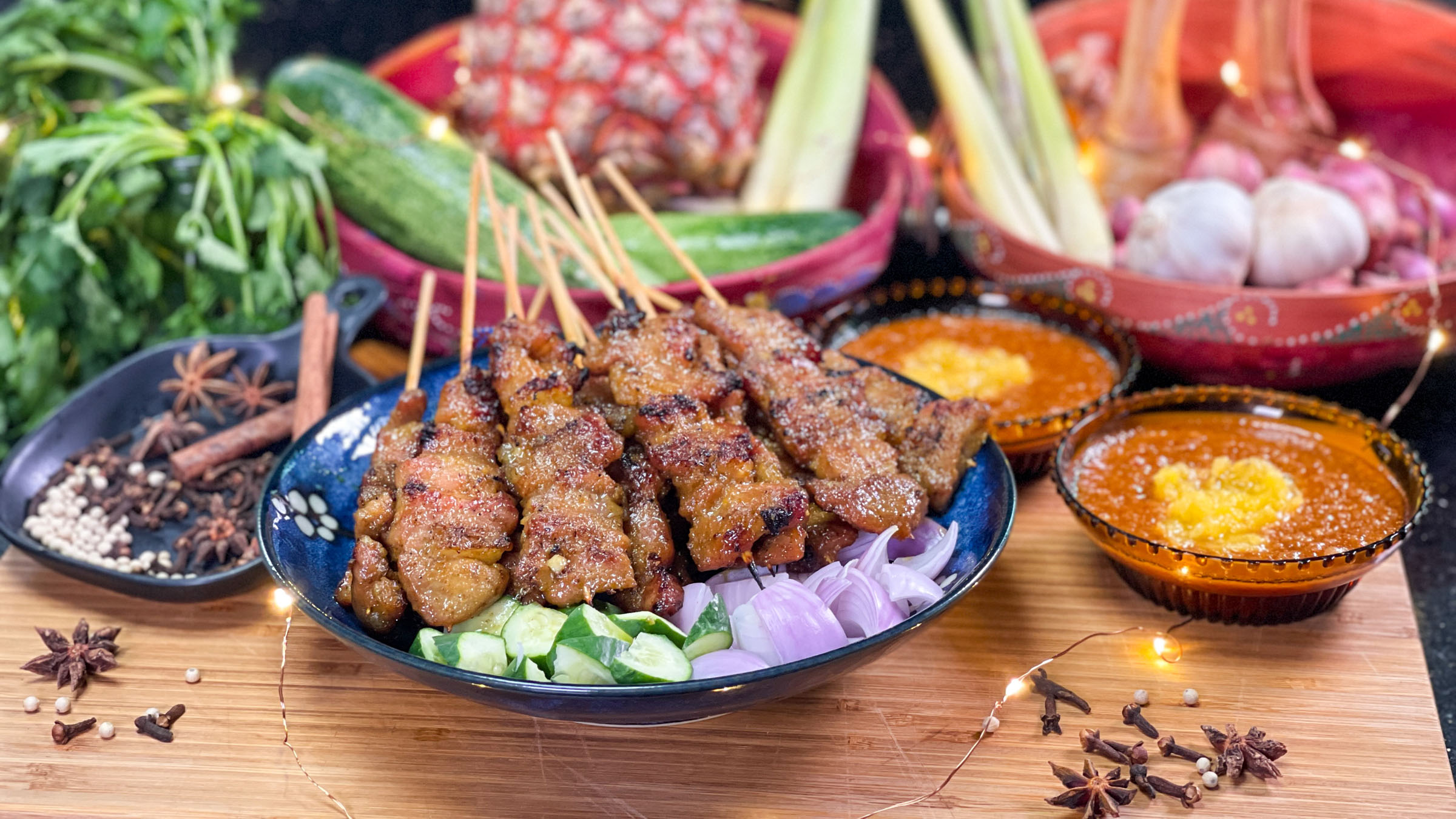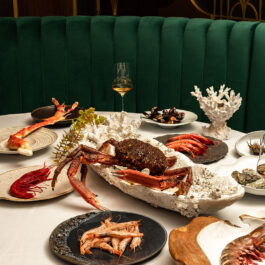When you think of Singapore, you think urban gardens, world-class shopping and amazing food – especially at the city’s hawker centres, those multicultural food courts where Chinese, Malay, Indian and other zesty cuisines come together.
For over a decade, Dr Leslie Tay has been documenting Singapore’s food scene. His photographic blog ieatishootipost.sg is a visual feast of Singapore hawker culture, while his YouTube channel is the place to go to watch him demonstrate local recipes with a precision befitting, well, a doctor. As our Tastemaker this month, Leslie lets us in on the secrets of the perfect Hainanese pork satay – those irresistible grilled skewers doused in delectable peanut sauce.
AMEX ESSENTIALS: Could you introduce yourself, to those who don’t know you?
LESLIE TAY: I’m Dr Leslie Tay, a family physician by day and a gastronomic adventurer the rest of the time. I started blogging about my foodie adventures on ieatishootipost.sg more than 15 years ago, and have come to be known as an advocate of Singapore hawker culture.
Why and how did you start your cooking channel?
Over the years, I have attempted to recreate authentic hawker dishes and publish the recipes online, so that the younger generation of would-be hawkers will have something to refer to when starting out on their hawker career. Over time, it naturally progressed to video recipes and subsequently a cooking channel.
What’s your cooking mantra?
Never give up until you get that perfect recipe! Sometimes it would take me half a year in order to perfect a recipe. My char siu recipe was only perfected nine years after I started the project!

How would you describe hawker culture, and why is it so important to help preserve it?
Our hawker culture is very unique, and so we are elated that it is now included in the UNESCO list of Intangible Cultural Heritage of Humanity.
Our hawker culture reflects the development of Singapore as a country since our independence in 1965. With the government’s development plan of providing housing for the population and modernising the country, street food hawkers were relocated off the streets and housed in hawker centres. They have since become an integral part of our lives. But as pioneer hawkers retire, there have been challenges in finding enough young people who want to carry on their mantle, which may diminish our hawker centres’ cultural relevance in the future.
Is your own cooking inspired by this unique phenomenon?
Very much so. When I started blogging, there were very few authentic recipes online, and so I made it my mission to talk to the hawkers to find out their secrets, so that their cuisine can be preserved for posterity.

When I started blogging, there were very few authentic recipes online, and so I made it my mission to talk to the hawkers to find out their secrets, so that their cuisine can be preserved for posterity.
On your blog, you regularly write about your quest for great satay in Singapore. Where does your fascination with the dish come from?
When I was growing up, satay was very popular. We even had a satay club at the Esplanade where there were many satay stalls all in one place. Eating satay was very much a communal activity, and we would sit around the satay man while he grilled the satay. The smell of the smoke would whet our appetite as we waited eagerly for our skewers to be ready!
When it comes to meat, what is the secret to the ultimate satay?
The cut of meat is very important in satay. Good hawkers will spend the time removing the gristle and sinews so that the meat is tender. Then there is the marinade. Great hawkers will have secret recipes which they guard with their lives!
If I can’t or don’t want to eat peanut sauce, what other sauces can I have alongside the satay?
A well-marinated satay can be eaten without the gravy. For Chinese-style satays, sometimes a pineapple purée is offered, though it’s usually eaten together with the peanut sauce.














Sorry, the comment form is closed at this time.